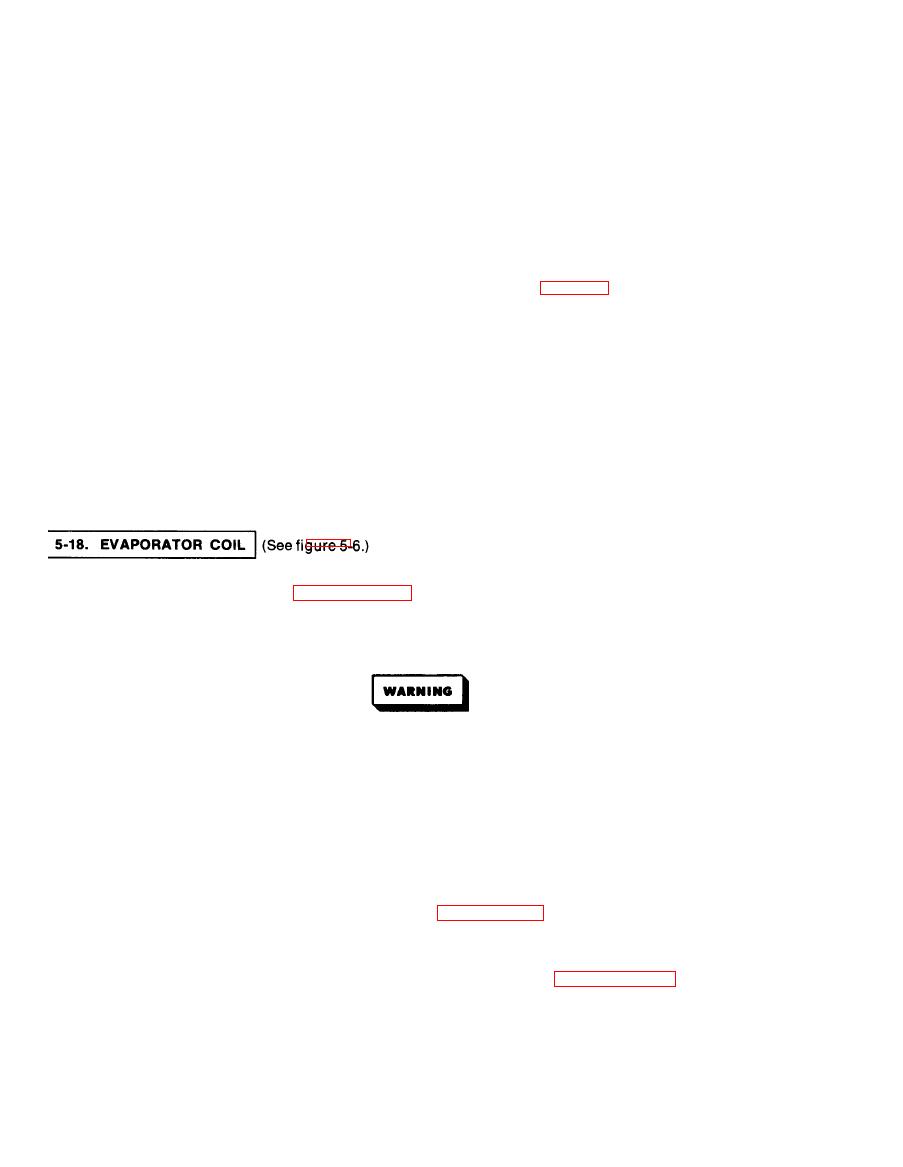 |
|||
|
|
|||
|
|
|||
| ||||||||||
|
|
 TM5-4120-347-14
system is even partially charged, the pressure should be approximately equal to that shown in the table for the
appropriate ambient temperature. If the pressure is considerably less than shown in the table, the system does
not contain enough refrigerant to continue the pressure check; proceed directly to leak testing.
f. Turn the air conditioner on and operate in the COOL mode with the TEMPERATURE SELECTOR in the full
COOLER setting for a few minutes.
g. With the unit operating allow gages to stabilize. Take readings of the two gages.
(1) If discharge and suction pressures are at, or near, the same valve, a pressure equalizer solenoid valve
L2 malfunction, or an internal compressor failure is indicated.
(2) If discharge pressure is low and suction pressure is normal, (See table 5-2.) a low refrigerant charge is
indicated.
(3) If discharge pressure is normal and suction pressure is either high or low, failure or maladjustment of
the pressure regulator valve is indicated.
(4) If both discharge and suction pressures are normal, but ice forms on the evaporator coil, or the
evaporator coil does not cool, during operation, failure or malfunction of evaporator expansion valve is
indicated.
(5) If discharge pressure is high and suction pressure is normal, a malfunction of quench valve is
indicated.
h. When pressure tests are completed, proceed with the maintenance action indicated.
The evaporator coil is located in the upper right front section of the air conditioner. For cleaning instructions
and inspection of installed items see paragraph 4-44.
a. Removal.
Disconnect input power from the air conditioner before performing maintenance on any part of the
electrical system. The voltages used can be lethal.
(1) Disconnect power at the power source.
(2) Remove the top front cover.
(3) Remove the supply air louver.
(4) Remove the mist eliminator.
(5) Discharge and purge the refrigerant system per paragraphs 5-9 and 5-10.
(6) Unwrap the insulation on the joints to be debrazed.
(7) Debraze tube connections at elbow and expansion valve. See paragraph 5-11. Take care that
expansion valve is not damaged during debrazing operations.
(8) Remove the top two flat head screws that attach the coil to the housing. Remove the side two flat head
crews and the two screws, Iockwashers and flat washers that attach the mist eliminator holder and coil to the
housing.
5-18
|
|
Privacy Statement - Press Release - Copyright Information. - Contact Us |